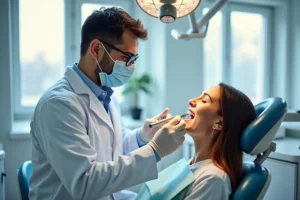Overcoming Eating Disorders: Proven Support and Treatment Strategies
Eating disorders are intricate mental health conditions involving unhealthy relationships with food, weight, or body shape. They can disrupt an individual’s daily life and have both short-term and lasting impacts on well-being.
Contrary to common myths, these disorders are not a matter of “willpower” or a personal choice—rather, they stem from a complex interaction of genetic, environmental, social, and psychological factors. There is no single cause, and symptoms often manifest differently for each person, which can make detection and treatment more challenging.
Globally, millions struggle with conditions such as anorexia nervosa, bulimia nervosa, and binge eating disorder, and these are not limited to any age, gender, or socioeconomic group. In many cases, eating disorders co-occur with other mental health challenges such as anxiety, depression, or obsessive-compulsive disorder, further complicating recovery. Left untreated, eating disorders can have devastating consequences not only on mental health, but also on physical health—affecting organs like the heart, digestive system, kidneys, and immune system.
Early intervention and compassionate support are crucial in the journey toward recovery. Many people suffering from eating disorders require specialized care that addresses both psychological and physical aspects of their condition. Those seeking help can benefit from specialized treatment resources, such as Bridge to Balance Eating Disorders, which offer pathways to comprehensive support and recovery.
Reaching out for help is a decisive first step, signaling hope for long-term well-being. Awareness and education about these disorders are vital for reducing stigma and encouraging individuals to seek help sooner. Building a supportive environment of family, friends, and professionals can greatly improve the chances of successful recovery.
Recognizing the Signs and Symptoms
Identifying eating disorders early can significantly enhance the effectiveness of treatment. Physical signs often include noticeable weight fluctuations, changes in eating habits, or an obsession with calories and dieting. These indicators may develop gradually or emerge suddenly, so family members and professionals need to remain alert to subtle cues.
Some individuals may start skipping meals, hiding food, exercising compulsively, or concealing their eating behaviors. For an in-depth guide on symptoms, causes, and treatment options, the National Institute of Mental Health offers comprehensive resources.
Social changes can also be telling. Withdrawal from social interactions, especially those involving meals, may indicate emotional distress. People might become secretive about what they eat or feel self-conscious around others. In certain cases, they may adopt strict routines, rituals, or rigid rules surrounding food and meal times.
Emotional and psychological signs are equally important to recognize. Many affected individuals show heightened anxiety, depression, irritability, or an intense focus on body image and self-esteem. They may frequently express dissatisfaction with their appearance, experience mood swings, or exhibit perfectionist tendencies.
Family, teachers, and healthcare professionals should be attentive to these warning signs and encourage open discussions about mental health. Establishing a supportive environment can build trust and help individuals feel less isolated as they face their challenges.
Effective Treatment Approaches
A multifaceted, personalized treatment plan is often necessary to achieve lasting recovery from eating disorders. The cornerstone of many treatment approaches is Cognitive Behavioral Therapy (CBT), which helps individuals challenge and modify distorted thinking patterns related to food, weight, and self-perception.
CBT works by helping patients identify negative beliefs and behaviors and develop healthier, more adaptive thoughts and routines. Group therapy, nutritional counseling, and family-based interventions are also vital components, offering both practical strategies and emotional reinforcement.
Nutrition education is essential for restoring healthy eating patterns and teaching individuals how to nourish their bodies in a balanced way. Family-based therapy can address interpersonal dynamics and involve relatives in the recovery process, ensuring that loved ones become supportive allies. Peer support groups also offer encouragement and help reduce shame and stigma.
Treatment plans must be flexible, continuously monitored, and tailored to each person’s unique needs. In some cases, medical intervention and hospitalization may be required for people experiencing severe malnutrition or physical health crises. Ongoing communication among medical, nutritional, and psychological professionals is key to effective, integrated care. Long-term follow-up can help maintain progress and reduce the risk of relapse, as eating disorders are often chronic conditions requiring sustained attention.
The Role of Support Systems
Recovery from eating disorders does not happen in isolation. The presence of a strong support network—family, friends, therapists, and peer groups—can make a significant difference. A supportive environment offers encouragement, accountability, and practical assistance during difficult periods. Support groups, both in-person and virtual, provide safe spaces to share experiences, gain new perspectives, and receive encouragement.
Frequently, individuals battling eating disorders feel isolated by their experiences, but group environments help reduce loneliness and foster a sense of belonging. These networks empower individuals to stay motivated during setbacks and celebrate each step forward, no matter how small. Friends and family can play a crucial role by learning about eating disorders, advocating for their loved one, and participating in the healing process.
Addressing Barriers to Treatment
Accessibility remains a considerable challenge in eating disorder treatment. Socioeconomic factors, lack of insurance coverage, stigma, and geographic limitations can impede access to timely, appropriate care. Lower-income individuals are especially vulnerable, underscoring the need for systemic advocacy and policy reforms to bridge these gaps. Cultural misconceptions or language barriers may further compound these issues, creating additional hurdles for some populations.
Healthcare providers must recognize barriers and proactively engage with at-risk individuals. Integrating eating disorder screening into routine medical visits is a simple but effective strategy to identify those struggling, especially among adolescents and young adults.
Cultivating a judgment-free environment is equally important, ensuring that all individuals feel safe disclosing their struggles without fear of shame or discrimination. Reducing stigma through education and outreach programs can help more people access the help they need without embarrassment.
Innovations in Support: The Role of Technology
Technology is expanding access to information, support, and even digital therapy tools. Recent years have seen the growth of mental health apps, online therapy platforms, and AI-based chatbots that provide support and resources around the clock.
These technological advances can offer instant help, personalized coping strategies, meal tracking, and therapist communication from the privacy of one’s own home. For individuals who may be hesitant or unable to attend in-person sessions, tech solutions lower traditional barriers to support.
Virtual support can bridge geographical distances, bringing help to individuals in underserved or remote areas and complementing traditional face-to-face therapy. Platforms designed specifically for eating disorder recovery offer education modules, online forums, and virtual support communities where individuals can connect outside typical business hours. While such innovations offer valuable supplemental support, ongoing research is needed to ensure safety, effectiveness, and privacy in sensitive patient interactions.
Preventive Measures and Education
Prevention efforts start with education. Schools, families, and community initiatives that promote positive body image, emotional resilience, and healthy eating patterns are foundational. Comprehensive health curricula that address disordered eating, self-esteem, and the dangers of diet culture can increase the likelihood of early identification and intervention. Early education helps individuals develop a critical understanding of media messages, societal pressures, and cultural ideals that often contribute to disordered eating.
Empowering young people—especially those in vulnerable age groups—with skills to navigate peer pressure, emotional challenges, and stress is an effective way to reduce risk and build long-term resilience.
Collaboration between parents, teachers, and mental health professionals can foster open dialogue and create supportive school environments. Community outreach, awareness campaigns, and accessible mental health resources also play essential roles in preventing disordered eating behaviors before they begin.
Conclusion
Overcoming eating disorders is an ongoing journey that calls for compassion, support, and evidence-based interventions. Early recognition, comprehensive treatment, and robust support networks are essential for long-term recovery. Commitment to removing treatment barriers, leveraging technology, and prioritizing education will continue to improve the lives of individuals affected by eating disorders.







0